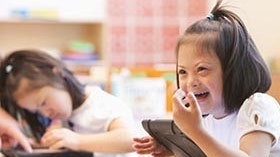Homepage
•
Learning Library
•
Blog
•
Assistive tech is a hotbed of innovation
Expand breadcrumbs
Expand breadcrumbs
- Learning Library
- Blog
- Assistive tech is a hotbed of innovation
- Homepage
- •
- Learning Library
- •
- Blog
- •
- Assistive tech is a hotbed of innovation
Assistive tech is a hotbed of innovation
By Linda Estep
April 1, 2015








